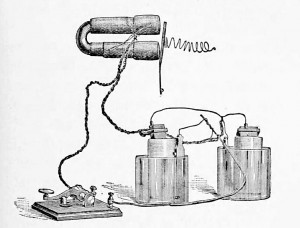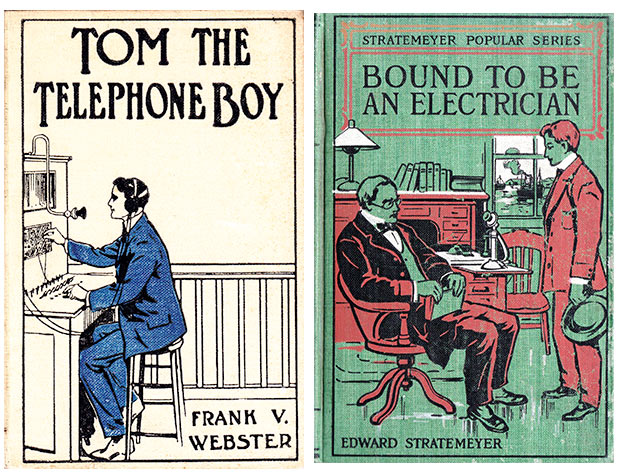 19th Century My story begins in 1890 in the Harvard physics lab of Professor John Trowbridge. He wrote juvenile fiction about the basis of all wired and wireless communication, electricity. His books, Electrical Boy, 1891, and Three Boys on an Electrical Boat, 1894, were about bells buzzers and batteries. Before communication by wireless telegraph and broadcasting by radio, there were stories of the wired telegraph and telephone.
19th Century My story begins in 1890 in the Harvard physics lab of Professor John Trowbridge. He wrote juvenile fiction about the basis of all wired and wireless communication, electricity. His books, Electrical Boy, 1891, and Three Boys on an Electrical Boat, 1894, were about bells buzzers and batteries. Before communication by wireless telegraph and broadcasting by radio, there were stories of the wired telegraph and telephone.
Shown in the illustration is a drawing from a Trowbridge book. It is basically a telegraph consisting of a key, a battery, and a “receiver,” a coil of wire acting as an electro-magnet wound around the familiar horseshoe design. When activated by the key, the current flows and magnetism pulls a piece of metal toward it and the resulting click represents a letter in code.
What did these early Trowbridge books teach their young readers? One is the concept of critical thinking as a teacher implores his students: “Don’t learn anything by heart – that is no way to learn; get the sense of the chapter and think of what questions I may ask – that is the way to get at the bottom of a thing.” This early Trowbridge idea is still valid today.
Below, two covers of juvenile fiction from the wired era.
